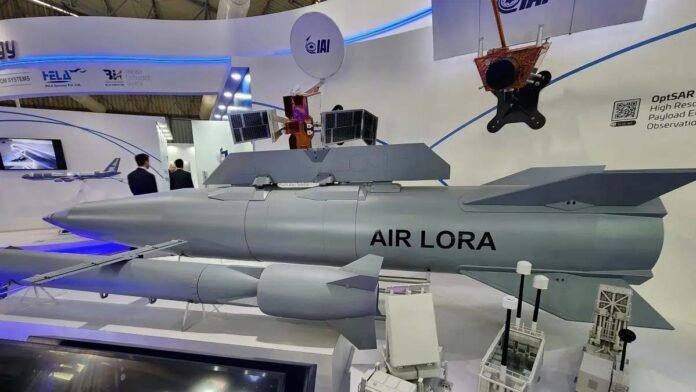New Delhi: In a major advancement for India’s defence modernisation, a confidential delegation from the Ministry of Defence recently completed a crucial visit to Israel.
The secret mission laid the groundwork for India to indigenously manufacture two of the world’s most advanced long-range missile systems — the Air Lora quasi-ballistic missile and the Ice Breaker smart cruise missile, reported international media.
The development, marks an unprecedented step in Indo-Israeli defence cooperation, as Israel has agreed to a complete transfer of missile technology. This includes design know-how, system architecture, and seeker integration, enabling Indian defence industries to master end-to-end production capabilities.
The transfer will empower Bharat Electronics Limited (BEL) and Hindustan Aeronautics Limited (HAL) to manufacture these weapons on Indian soil under the Aatmanirbhar Bharat initiative.
The acquisition comes amid China’s rapid deployment of layered air defence systems along the Line of Actual Control (LAC), designed to intercept incoming aircraft and missiles.
Concurrently, India’s western front has witnessed increased reliance on GPS jamming by Pakistan, as seen during Operation Sindoor in May 2025.
In that operation, Israeli Rampage missiles proved effective despite electronic interference — a performance that convinced Indian strategists to adopt the Air Lora and Ice Breaker systems.
By introducing these stand-off munitions, India will significantly expand its capability to strike strategic targets at long ranges without exposing aircraft to hostile air defence networks.
The Air Lora quasi-ballistic missile offers a range exceeding 400 kilometres. Weighing around 1,600 kilograms and carrying a 570-kilogram payload, it can destroy hardened shelters, command nodes, and high-value military assets. The missile achieves a circular error probable (CEP) of less than ten metres, ensuring pinpoint precision.
Its unique quasi-ballistic trajectory allows for high-altitude manoeuvres and real-time target redirection, making interception extremely difficult. Operators can reassign in-flight targets, enhancing operational flexibility against mobile or relocated threats.
BEL is expected to handle the complete indigenous manufacturing process, including advanced composite structures, guidance seekers, and electronic control systems. The Defence Research and Development Organisation (DRDO) will likely absorb technical inputs from the project to refine future indigenous missile platforms.
Developed by Rafael Advanced Defence Systems, the Ice Breaker is a new-generation, AI-enabled, multi-role cruise missile with a combat radius extending beyond 300 kilometres. With an all-up weight of just 400 kilograms, it can be integrated on light fighters such as the Tejas and carrier-borne platforms.
The missile possesses stealth shaping, adaptive flight profiles, and autonomous target recognition facilitated by onboard machine learning algorithms.
Once launched, it can loiter over an area, identify and prioritise targets autonomously, and execute precision strikes on both terrestrial and maritime objectives.
Equipped with advanced terrain-contour matching and electro-optical navigation, the Ice Breaker retains full functionality even under severe GNSS denial or electronic jamming conditions. These capabilities were validated in active combat environments such as the Ukrainian conflict and India’s Sindoor operations.
HAL will oversee integration and production of the Ice Breaker, leveraging its prior experience with indigenous Astra missile systems. Collaborative interface development with Israel Aerospace Industries ensures compatibility with Tejas’ avionics and digital weapons management systems.
Meanwhile, BEL will construct core guidance subsystems and composite assemblies for the Air Lora. The Defence Ministry is finalising the technology transfer and licensing arrangements, ensuring a secure ecosystem across strategic suppliers and public–private partners.
Once localised production reaches operational maturity, the government aims to position these systems for export to friendly nations in Southeast Asia. This aligns with India’s policy of creating defence export capacity while strengthening strategic partnerships in the Indo-Pacific.
Final approvals, including financial allocation and export compliance, are being coordinated under the broader framework of a twenty-billion-dollar aerospace procurement package.
The Cabinet Committee on Security is expected to clear the project by mid-2026 following price negotiations and ToT milestones.
By securing these advanced platforms, India will not only enhance its deterrence posture but also accelerate its evolution from a major defence importer to a technology-driven producer.
For India’s scientific and engineering community, the initiative reflects a growing confidence in indigenisation — heralding a new era where Indian factories design, manufacture, and upgrade some of the most sophisticated missile systems in the world.





